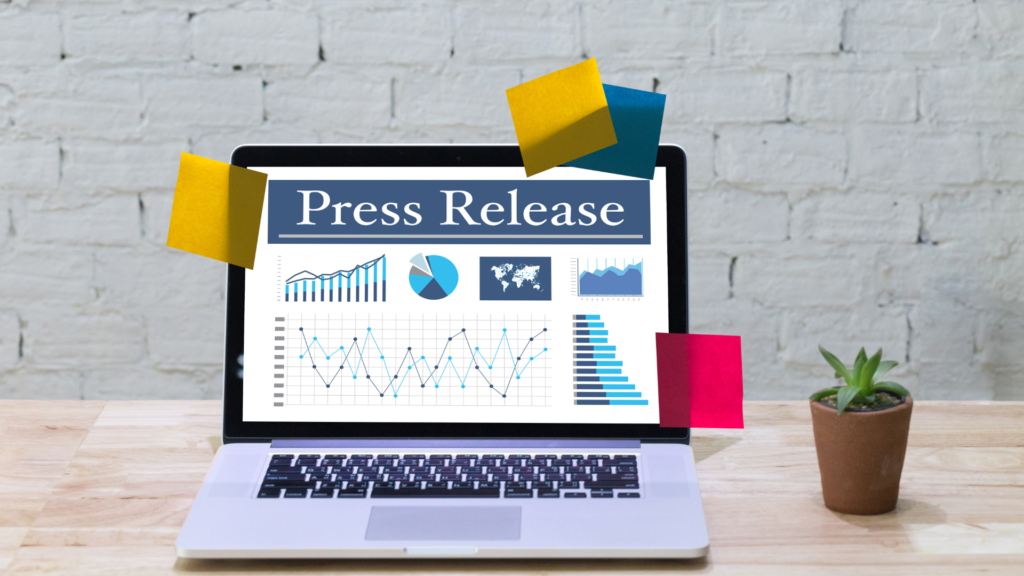Strategic Media Alliance 1: Dissemination & reach Copy Copy
Strategic Media Alliances or how to work with the media?
We have arrived at the final part of our Media Engagement Strategy! In this module, we will provide the basis for Step 3 of our strategy development. As a reminder Step, 3 is all about grounding the strategy to concrete actions. This module identifies three pathways of action: dissemination & reach, content co-creation, and partnerships.
Strategic Media Alliances:

SMA 1: Efforts directed at amplifying content and ensuring that it arrives to the audiences that are intended for and beyond. This strategy is best suited for when content/information is already created, and you are looking to best disseminate it.

SMA2: Creating content with the help of media organisations. This strategy is best when you have relevant information to share and potentially you have some creative ideas, but you need support in creating engaging and powerful content.

SMA 3: Mutual capacity development entails investing in sustainable NGOs-media relationships built on trust, equality and mutual respect. An effective process of active learning and doing together – strengthening each other’s skills, knowledge and network contacts, taking joint, complementary actions, and maximising each other’s strengths
Strategic Media Alliance 1: Dissemination & Reach
Dissemination is about spreading the information you have as an organization widely. Especially thinking for example about research conducted, relevant factual information, mission & purposes of the organization, funding, etc. This SMA is about improving the reach of the message to the right audiences. We will go over strategies for news media organizations as well as some tips and tricks for social media outreach.
- Dissemination – to spread (something, especially information) widely
- Reach – the number of people who come in contact with your information
What to consider?
To direct your communication efforts successfully and efficiently you must keep in mind the following elements when planning dissemination strategies together with the media organization you are collaborating with.
- Target audiences – Who are you trying to reach?
- Key message – Why are you sharing this? What is the purpose of this information?
- Platforms – How and when will you reach them?
Ways of working with Traditional Media
Tools to work with traditional media outlets: different strategies to disseminate our messages with traditional news media.
In this section, we will offer some suggestions to work with traditional media outlets, mostly those that are focused on producing news. These media outlets are usually structured in similar ways and therefore you must know what are the roles and responsibilities of people working there and also what are the common practices of these organisations.
Press release

A press release is an official statement (of an event) delivered to members of the news media to provide information. Press releases are considered primary sources of information, meaning they are the original informants.
A press release is usually structured in the following way:
Headline | Reference interesting data, speak directly to the reader, ask a question, include keywords, use numbers, answer a question, apply alliteration, and add value. |
Dateline | Most press releases simply put “for immediate release” in the date of publication field, but that isn’t your only option. If you have an upcoming event, you can always send out your press release early and instead list the date you’d like it to be released. |
Contact Information | This field on the press release should list your organization’s public relations liaison. This field should include their name, job title, email, and phone number. |
Summary | This falls above the body of the press release but below the headline, contact information, and date. The summary is one to three bullet points or an italicized paragraph of two to three sentences relaying the most important information. Keep it succinct. |
Body | Intro paragraph; should start with the location of the event and introduce what the press release is about. Media outlets are looking for a newsworthy announcement and for three of the five W’s—when, where, and why. You can include one or two detailed paragraphs that share facts and figures, more details, or a quote from a relevant organization member. Pick only one or two crucial quotes or statistics that are truly newsworthy. You can use the third paragraph to also relate your press release to a current news event to make it timelier and more relevant. |
About | Also called the boilerplate, the about section is where you tell the press about your company. This section should be two to four sentences and include the last two of the five W’s—who and what. Include the name of your organization and its mission statement, founding dates, and company size. Close (indicator that the PR is ended) |
Ending | Traditionally the ending is signalled with a ”###” have been included at the end of a press release to indicate the end of the press release content. The signs were used to let wire services know that there wasn’t another page and tell journalists that they didn’t need to wait around for another page. Nowadays, these symbols aren’t technically necessary, but many writers still follow this format out of respect for the tradition. |
Let’s see some of the common mistakes or ‘bad practices’ most commonly found:
- Too long texts. A PR needs to be a short, direct and simple documentOverstating achievements. Do not overstate your achievement unless you have evidence to back up your claim.
- Boring headlines. Be simple and catchy with your headline, and avoid buzzwords, jargon, and acronyms.
- Poor distribution of the press release. Media coverage does not just come naturally. We see many non-profits end up publishing press releases on their websites and social media, without actively distributing the message to journalists. Either you need to set up your network of media contacts (database) or distribute it via paid press releases distribution services such as Newswire, PR Newswire and eReleases. One of the most important things is to tailor your press release to the target journalists, ‘one version suits all’ does not work. For example, if you distribute a national research report to local media, you might want to highlight the most significant findings from the report directly related to the region.
Interview

An interview is a structured conversation where one participant asks questions, and the other provides answers.
Interviews by print, radio, tv or digital media are a fundamental tool for non-profit work. An interview is a perfect space where to disseminate in clear, simple, and powerful ways the mission and vision of your organization in a grounded way. It is crucial to select the right people to represent your organization for the interview; both because you need to select someone who accurately represents the organization but also someone who is appealing to a media outlet. Usually, before even agreeing on the interview officially there should be a conversation with the journalist, editor or producer and the organization to see what their expectations and needs are.
There are some considerations you should take when preparing for an interview. We will provide some suggestions in two areas of concern: content strategy and presentation skills. We will also share some general tips & tricks.
Content Strategy | · Back up your statements with evidence · Think of potential questions journalists might ask, and be ready · Give examples |
Presentation Skills | · Soundbites: Speak in short, clear, punchy (i.e., quotable) sentences · No jargon, be humble · Mind your pace when speaking · Friendly and straightforward |
Tips & tricks | · It’s okay to say “I don’t know” · Acknowledge and thank the team |
Press Conference

A press conference is a staged public relations event in which an organization or individual presents information to the news media and invited journalists to ask questions related to the topic. These events are often held by politicians and non-governmental organizations to present a statement to the press.
Communications officers use press conferences to draw media attention to a potential story. They are typically used for political campaigns, safety and health emergencies and promotional purposes, such as the launch of a new product or campaign. In some extreme cases such as non-profits trapped in a public scandal or controversy or big organizational change, a press conference is a common practice to give clarities and save reputations and reclaim their credibility.
- You can give more information than in a press release.
- A press conference is interactive; you can answer questions from the press and emphasize points you might not otherwise have a chance to make.
- You can announce an important development and explain its significant local and wider implications.
- When many media representatives are present, it makes your conference seem newsworthy; the media presence itself adds to the importance.
- A successful media conference can not only generate news but can also boost the morale of your group. That is, your group can take pride in knowing that the press will turn out to hear what you have to say.
Preparing for a Press Conference
1. Define the message | Define the key message(s) that you and your group are trying to get out to the community. Your goal may be to introduce or shed more light on your issue, to announce a new program or event, to react to a news story or criticism of or attack on your effort, or to draw attention to an honour or award your effort has earned. Whatever the message, it should be summarized in clear 3-5 key points to the press. |
2. Schedule date & time | You and your group will need to determine a date and time for the press conference, and make sure it doesn’t conflict with other press events or media deadlines. One way to find this out is to check with the local media and the wire services, who will know if your press conference conflicts with another. Here are some other tips for scheduling your press conference: – Tuesdays, Wednesdays, and Thursdays are the best days for press conferences, as they are considered slower news days. Try to have your press conference on one of these days if possible. – The best time to schedule your press conference is between 10:00 a.m. and 11:00 a.m., to ensure maximum coverage by the media. If you schedule it later, you risk missing the afternoon paper or evening news. |
3. Pick the site | Make sure you pick a location for the press conference that has adequate parking and is not too far away for reporters to travel. Also, pick a site that provides visual interest and relationship to each topic–such as the state capitol building, city courthouse, a local clinic or another site where the activities you’re talking about are going on. Other considerations include picking a location relatively free from high levels of background noise (e.g., traffic, telephones, aircraft), and one which has adequate electrical outlets and extension cords for lighting, etc. |
4. Select and prepare your participants | Be clear and concise, avoid jargon and talk at a steady direct pace. Assume your audience is knowledgeable on the topic you are talking about, so get to the point, if they have questions, they will ask them. When presented with a question, take your time to answer, think before you speak and be honest, if you don’t know own it. |
5. Select a moderator | A moderator will oversee convening the press conference by introducing the issue and participants. The moderator also answers questions or directs them to the appropriate participants. |
6. Contact the media | Create a comprehensive mailing list of assignment editors at television stations, news directors at radio stations, major newspapers, and editors at weekly newspapers. Others you’ll want to be sure to include on your list are reporters you have worked with before, contacts in the media you may have, and reporters who may have covered the issue in recent months. If your organization has worked with the media before, you should have personal contact with several media people. If you haven’t made those contacts, this is a good time to start. People working in the media industry are just people, so be kind and if you can make their jobs easier, they’ll return the favour. If you have a website make sure you have a press page where journalists can reach out and submit their interview requests online. |
7. Follow up with the media | After you and your group have mailed the press advisories to the media, you will want to follow up your press advisory with phone contact to the major media outlets. Give your press advisory three days to arrive, then begin your telephone follow-ups with the people you sent your press advisory to (if they say they never got one, offer to bring or email one to them). Also, follow up a second time on the morning of the press conference. |
8. Develop a press kit | A press kit is a folder of information to give reporters background information about your issue or program. Press kits are very useful if your group can afford them. If a press kit is beyond your budget, a press advisory will do. Your press kit should contain the following: – A list of press conference participants. – A press release, which should state your group’s position on the issue, highlights of the press conference, and a few quotes from participants (for more, see Preparing Press Releases). – Background information about the issue (i.e., statistics, historical background, case histories, or reprints of news stories). – A few black & white glossy photographs (action photos are most interesting). – Short (less than a page) biographies of participants. – Related news stories from prestigious national publications (e.g., New York Times, Wall Street Journal, etc.). – Putting the kit together: The press release goes to the right side of the folder, and the other information goes to the left side of the folder. |
9. Prepare the room | There are several things you can do to prepare the room you’re holding the press conference in. Here are some tips: – Check the location of electrical outlets for microphones and lights. – Set up the room with a table long enough to seat all your spokespeople, with name cards. – Provide enough seating in the room for reporters, and enough room for their supporting equipment (e.g., cameras, microphone). – Display visuals as a backdrop to your speaker’s table: charts, posters, etc. – Have a sign-in pad for attendance. – Provide a podium for the moderator, perhaps with your organization’s logo on it. – Have coffee, tea, water, and any other refreshments set up. |
Tips & tricks
- Invite the media to other events your organisation hosts: learning events, conferences, debates, protests.
- Prepare a short digital press release on USBs that media can take with them
- Have flyers of your organisation: mission/vision & contact info
Beyond the traditional approach of engaging with the press shown above, non-profits invite journalists to participate in their online/offline events on a range of themes and topics. The main objective of engaging with journalists is to create a buy-in opportunity to encourage them to report the events and the social problem they focused on to raise social visibility.
For example, inviting journalists as guest visitors to attend their events such as protests, debates, competitions, panel discussions, summits, exhibitions or award ceremonies etc. Some organizations invite journalists from their network of media contacts or contract PR agencies to do so, or both. Remember that in some countries it might be a common practice to financially compensate the labour and transportation of the journalists, and you need to properly budget it.
For events like this, remember that sometimes you need to prepare a press release before or shortly after the event with the journalists via email or a USB together with some raw materials such as text and video recordings and photos and research reports. This will help journalists quickly produce the coverage. It is always necessary to ask the journalists to share a draft of their product before it is published to check whether it has any factual mistakes, but it is important to respect their editorial independence. After the content is published, do not forget to ask the journalists to share the link, clip and copies with you, you shall document them properly.
To make sure the participating journalists get better to know your organisation, it is a common approach to produce communication materials, especially for offline events, such as brochures, flyers, roll-up banners and promotional videos. You can put the brochures, flyers, printed research reports and merchandising products into the gift bag which journalists can pick up at the reception or from their seats.
Dissemination & Reach through Social Media
Amplification through social media channels
As we’ve established so far, pitching relevant, evidence-based, powerful stories is an essential aspect of collaborating with media organizations. We have also discussed the possibility of co-creating content together with media outlets, that is relevant, fact-checked, and ethical. But what is the point of great, well-informed content, if it is only seen by a dozen of people?
Social media offers a great way to instantly share valuable information, oppose disinformation and implement positive narratives that go beyond the reactive approaches to achieve our desired impact.
Amplification refers to the strategies of online promotion and distribution of content. Beyond the obvious, there are different goals in amplification and different strategies to follow. We need to understand the mechanism of social media dissemination of content and identify the different services and strategies to take control of how our content is shared.
The mechanics of social media and the ultimate goal of amplification is reached.
Reach is the number of people who are exposed to information. Social media uses algorithms to prioritise content. Algorithms control the ordering and presentation of posts, so users see what is most relevant to them. This relevance is usually based on friends, family and acquaintances.
In other modules, we discussed the importance of understanding audiences and specifically the credible sources of our audience. This is because social media platforms use the same logic in serving content to their users. Friends, peers, and family are regarded as more credible to the audience and therefore platforms will prioritise content from these sources. In 2018, Facebook changed its algorithm to prioritise friends, families and the groups that users joined as more relevant and therefore more visible in users’ timelines.
Social media is designed in a way to keep our dopamine levels high. This works in the same way that drugs work on the brain. A user posts something, and they then get validation, which hikes up their dopamine levels. They then continue to return to their posts to check on additional comments and validation. This cycle of dopamine release becomes addictive to users. It ensures that behaviour is reinforced and leads to habit formation. Users are presented with more notifications than before because it was observed that receiving notifications drives users to return more frequently. More relevant content also ensures more usage time. This also happens when users comment, they want others to respond or their comment to be validated in some way.
Amplification across channels

Another strategy for amplification is to move the content across different channels and platforms. This can be done by repurposing content to best fit the platforms being broadcasted, linking content by referencing original articles or follow-ups, and through hashtags and calls to action.
- Cross-channel promotion and content sharing, for example from Facebook to WhatsApp, Instagram and Twitter. These are usually linked through hashtags or other trackable identifiers.
- Repackaging or re-purposing content/insights online into blog posts or other content – this could take the form of posters, graphics, infographics, videos, animations or creating listicles or interactives.
- Hashtag sharing, where hashtags are popularised and used consistently.
- Swarming: in which communities work together to comment, promote, cross-promote or popularise content. Swarming may also be done by mass emailing targeted individuals (lawmakers and politicians) to express concern or dissatisfaction. In many countries, if more than a certain threshold of people express dissatisfaction with a law or policy then it needs to go into discussion.
- Influencer marketing: whereby online personalities with large communities of followers share information or promote hashtags/information.
- Other: developing a charter, facilitating an online petition, data gathering/data visualisation hackathons, developing and distributing surveys, distributing electronic action alerts (SMS/WhatsApp), facilitating challenges (like ALS Ice bucket challenge and TikTok challenges), online crowdsourcing, hosting live online interviews, discussion groups and open forums on research or findings, hosting virtual talks; webinars and workshops, facilitating online protests, etc.
